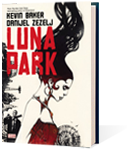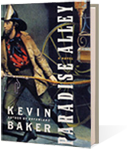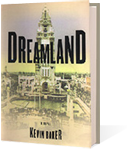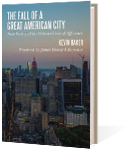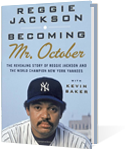One standing rule at this column and the rest of American Heritage is to be sure not to focus too much on New York. It’s a good rule, for we New Yorkers have a tendency to think we are always at the center of the world, in case you haven’t noticed. We also love to insist that we have seen it all before.
Then came September 11, 2001. Those of us who live and work here had to admit that yes, for once we would have been happy to forego all the attention, and remained one more untroubled spot on the globe.
Yet we have been hurt before, if never quite like this. We have seen fire and riot and war. We have even seen the terrible spectacle of people taking leaps from high buildings they could not possibly hope to survive.
At the Triangle Shirtwaist Fire in 1911, some 146 garment workers died in fifteen minutes. Most of them teenage girls, jumping from the ledges of the ninth floor windows. They leapt holding hands, some of them. Falling so hard, so fast, that they ripped through the deadlights embedded in the concrete sidewalks below.
“Thud-dead! Thud-dead! Thud-dead!” William Shepherd, the United Press reporter on the scene reported. “I call them that because the sound and the thought of death came to me each time at the same instant.”
There were so many funerals in Greenwich Village afterwards that mourners sometimes got mixed up and walked in the wrong procession. But the building they jumped from is still there on Greene Street, you can go and look it up, and the young women and men still come to work in the clothing trades, and the union those teenage girls did so much to build still fights for their rights.
There have been terrible fires before that devastated our financial district. One in 1845, before that one in 1835 that took out 674 buildings and plunged the whole nation into a depression. They were put out by volunteer firemen wearing hats that looked much like the ones they wear now, with a high shield in front and a long canvas back. In those days they wheeled their own, primitive engine through the streets, charging just as boldly into burning buildings as hundreds of firefighters did on September 11.
There have been other, random disasters—if none quite so costly, if none quite so deliberate and brutal and cynical. In 1945, a B-25 bomber, lost in the fog, ran smack into the 79th floor of what was once the supreme symbol of the skyscraper, the Empire State Building. Fourteen people died, but the damage was repaired, more skyscrapers went up.
On the previous, worst single day June 15, 1904, some1,021 German immigrants died when the General Slocum, an excursion boat, caught on fire in the East River. There were 2,500 life jackets on board, but no one had noticed that they had rotted and crumbled with age. The whole neighborhood of what was then Kleindeutschland, in the East Village, was wiped out in an afternoon. But the Germans regrouped, moved up to what became Yorkville, on the Upper East Side. Their old tenements filled up by new immigrants, by Jews and Slavs from Eastern Europe, by Italians and Bohemians.
We have had mad bombers before, one of whom evaded capture for sixteen years. He set off some 33 homemade devices but did not manage to kill anyone, maybe because he only had a grudge against the Consolidated Edison company, as opposed to the world since 1400. Then there were the revolutionaries who killed four people with a bomb planted in 1975 at Fraunces Tavern, previously most famous for being the site where Washington bade farewell to his officers. It was all in the cause of liberating Puerto Rico—never mind that, in one referendum after another, no more than a miniscule number of their compatriots ever expressed the desire to be “liberated.”
The worst Wall Street bombing came at the stroke of noon, September 16, 1920, when someone—maybe or maybe not a group of Brooklyn anarchists—set off a bomb in the back of a horse cart. This was at what was once the very beginning of the American republic, the site where George Washington took the first oath of office as president. It had long since become the Sub-Treasury Building, though a large statue of Washington still presided over the spot, holding out his right hand toward the southwest, as if making a plea for the sort of calm and deliberate democracy he espoused.
It did not deter the bombers, who had attached sash weights to the charge. Their main target was apparently the House of Morgan, just across Wall Street, and the blast was so powerful that all they ever found of the cart’s horse was its shoes and forelocks, two blocks away, in the yard of Trinity Church.
As it turned out J.P. Morgan, Jr., was in Europe, but there was a bloody slaughter of 33 clerks and secretaries, out on their lunch hour. Washington’s statue remains, and so doess the Morgan building, you can still go and see the pockmarks in the marble wall. Trinity and its yard are still there as well, covered as they were by the ash from when the Twin Towers dissolved.
If you think that was the greatest affront to our heritage before now, well, there were the German saboteurs in World War I who blew up the Black Tom munitions dump over in New Jersey. They only managed to kill a few night watchmen and riddle the Statue of Liberty with shrapnel, but as you are probably aware the statue is still out there, and the U.S. was not frightened out of joining the war, when the kaiser’s U-boats resumed their own brand of terrorism on the open seas.
There have also been the wounds we have inflicted upon ourselves here in New York. There was the shameful, tawdry black-out riot in the summer of 1977. The awful, slave-uprising panics in 1712 and 1741, plots and alleged plots which led to dozens of African-American men being tortured and executed.
There were the endless, drunken riots of the late-eighteenth and nineteenth centuries, born out of ignorance and poverty, and ethnic hatred—the Flour Riot and the Orange Riot, and the Dead Rabbits’ riot, and the Police Riot and the Doctors’ Riot. No, the doctors themselves did not run amok with their scalpels and stethoscopes; rather they were rioted upon, for the alleged crime of dissecting the corpses of respectable people. The Police Riot really was just that, though—rival police forces, one created by the city and one by the state legislature, brawling on the steps of City Hall.
None of that compared, though, to the New York Draft Riot of 1863, which may have been the worst American riot ever. For five days, mobs protesting the Civil War draft ran amok, pillaging and burning and committing appalling atrocities against any black person they could lay their hands on, including orphaned children. Phalanxes of police, vastly outnumbered and largely without guns, charged up and down the avenues against the mob—just as fearlessly and as heedless of their own danger as those officers who charged into One and Two World Trade Center just before they collapsed. The police held the city for the Union—and civilization—until federal troops could get here; held it mostly by the sheer force of their locust clubs.
And yes, we have also suffered terrible losses inflicted by a foreign enemy before—more than any other place in America. After the British took Manhattan in 1776, a third of the city burned (probably at the hands of overzealous patriots). The British occupied what was left of New York for the rest of the war, and out in the harbor and the East River they anchored twenty-five, rapidly decaying old hulls that they used as prison ships.
On board, American soldiers—including Ethan Allen—were chained down in the dark holds, far from the light. They were deprived of almost any medical care or exercise, and fed, literally, on the garbage from the British navy messes. Before the war was over some 11,000 of them had died of disease and privation, nearly twice the number of all Americans who had died in combat.
When the British finally left in 1783, New York was a burnt-out, impoverished shell, wracked with grief and suffering. It has done a little better since then, which was how it came to be chosen for the horror that descended out of a clear blue sky.
For it seems now that we have been reduced to a new role, that of stage scenery. The men who committed these despicable, nihilistic acts, saw the World Trade Center as a convenient symbol for their propaganda coup, a backdrop that would be instantly recognizable around the globe.
In fact, what the skyscrapers at the end of Manhattan represented is an immensely complex and eclectic civilization. New York City is the most cosmopolitan place in the history of the world, which only makes it the most American part of America. This isn’t to claim any special privilege. We have all the faults of human beings everywhere, and then some.
Yet over the years, in good part because of the very disasters that have beset us, we have been forced to learn a little tolerance, a little respect for each other. We have learned to be a little less sure of what we believe, to see some of the ambiguities inherent in life—which may be one big reason why we are still here, and why people still flock from the ends of the earth to join us.
The men who did this deed live only in the arid, mental desert of dogma and destruction. Their whole concept of the twin towers was an infantile one, crashing toy airplanes into building-block skyscrapers. We will clean up their mess, and build over it again, with the help of our countrymen—and all those who would be our countrymen, in thought or in deed. For it is we who have learned how to build and to abide.

